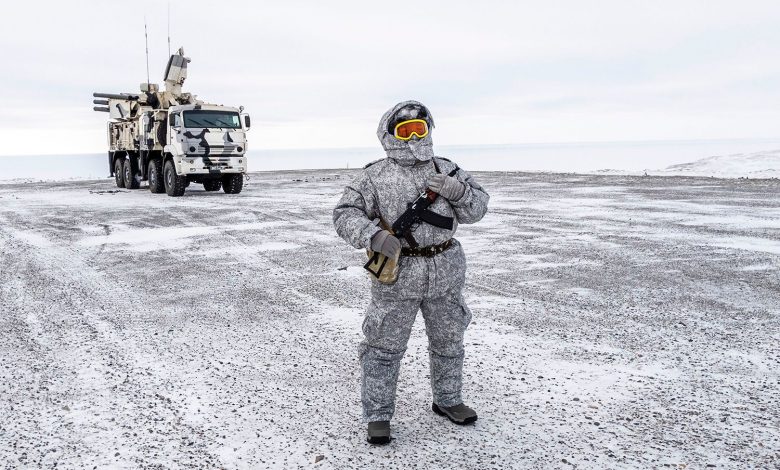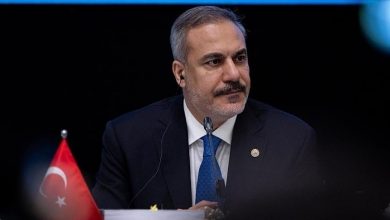Analysis: How Russia’s Future With NATO Will Impact the Arctic

Three critical ways the crisis in Ukraine will determine the region’s future.
The geopolitical importance of the Arctic region is coming back into focus as Russian troops further encroach into Ukraine. The Russian invasion further deteriorates relations and highlights critical fault lines between Russia and NATO-allied states. In determining their response to Russian aggression, NATO allies are weighing key considerations, including the various impacts from the potential use of force, balancing the use of sanctions with Europe’s reliance on Russian energy supplies, and addressing Russia’s strengthening ties with China.
The Arctic region is set to play a key role in each of these considerations. Abundant natural gas and energy reserves are concentrated in Russian Arctic territory, which European countries highly depend on for their energy supply.
Meanwhile, Russia has made the Arctic a focal point of its military modernization efforts, leading to a steady buildup of Russian and NATO forces throughout the region. The widespread military buildup since 2007 amplifies the potential for a conflict between Russia and NATO-allied states to spill over into the region. Armed conflict in the Arctic could permanently damage regional cooperation, compromising coordinated efforts, dating back to 1996, among the Arctic states (Canada, Denmark, Finland, Iceland, Norway, Russia, Sweden, and the U.S.) in search-and-rescue operations, environmental protection, and prevention of illegal fishing, among other issues. President Putin is also leveraging Arctic resources to strengthen his hand elsewhere, including deepening connections with China by announcing renewed cooperation in the Arctic and signing a new 30-year agreement on energy exports in early February.
As the Ukraine crisis evolves, the Arctic’s role and the impact the crisis could have on the region are broken down below.
Rapidly receding sea ice is enabling access to a range of highly valuable resources across the Arctic. In addition to energy reserves, critical minerals, and fisheries, newly opened shipping lanes across the Arctic could potentially help to re-route global trade and enable high-speed internet connectivity between Europe and Asia.
The ability to exploit newly available Arctic resources is drawing increasing interest from both commercial and national actors and is enticing nations, such as China and Japan, to pour both political and financial capital into the region.
As new commercial relationships emerge in the Arctic, Russia and China are increasingly collaborating on Arctic development—with China providing capital for Russian energy and infrastructure projects. At the same time, Russia has been militarizing its Arctic territory, re-opening Soviet-era military bases, investing in new Arctic-specific technologies, and conducting extensive war games across the region. This has prompted NATO countries, led by Norway and the U.S., to conduct their own war games in the region and has raised concerns over the potential emergence of a Russia-China alliance in the region.
Russia and China’s relationship is nuanced. The two countries have their own competing interests in the Arctic, with interactions between the two actors to proceed at a cautious pace for now. However, increasing military activity in the region continues to elevate the risk of a misunderstanding, or an outside conflict spilling over into the Arctic, particularly in the absence of an official security body for national actors through which to address regional defense issues.
With new players, commercial relationships, and extensive military buildup emerging in the Arctic, there has been an attendant increase in international tensions. Commercially, strengthening ties between Asian and European nations, deepening levels of Chinese investment across the region, and Russia’s emerging primacy are generating U.S. pushback.
Militarily, Russia’s extensive defense buildup and alternating military exercises by Russia and NATO actors have created a potentially more volatile region. Against a global backdrop of heightening U.S.-Russia tensions and the wider uncoupling of the U.S. and Chinese economies, the Arctic is emerging as an arena of great power competition.
FP Analytics’ Arctic Competition Power Map two-part series breaks down key emerging trends across the Arctic by:
- Mapping control of key resource bases and breaking down the state of play between public- and private-sector actors who are competing for Arctic access and influence;
- Outlining the emerging commercial and economic relationships between national and commercial actors in the region;
- Projecting the key points of geopolitical tension and the relative power positions of the actors involved;
- Highlighting the global implications of increasing militarization across the Arctic; and,
- Identifying critical risks materializing for policymakers, businesses, and non-governmental actors.
FP Analytics’ Arctic Competition Power Map series provides a comprehensive mapping and analysis of the developing commercial, military, and great power competition in an increasingly accessible Arctic. It clarifies key points of competition and potential conflict as well as opportunities for collaboration.
It is a powerful tool for businesses and others seeking to understand how emerging great power competition across the Arctic will help shape and influence the wider geopolitical landscape. By providing a comprehensive breakdown of the wide-ranging commercial and security issues at play, the Arctic Competition Power Map series provides critical insight into strategies for effectively navigating this dynamic region.
Source: FP Analytics





